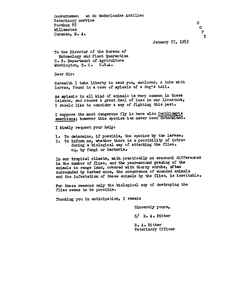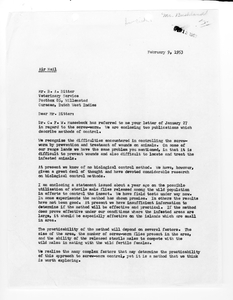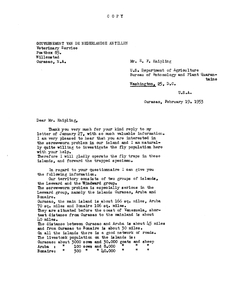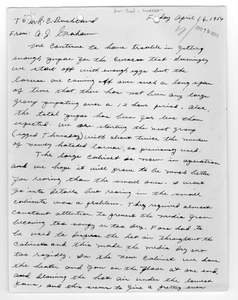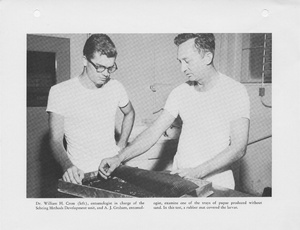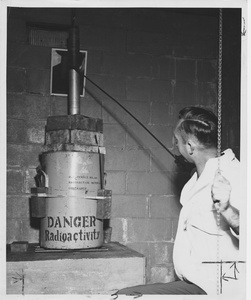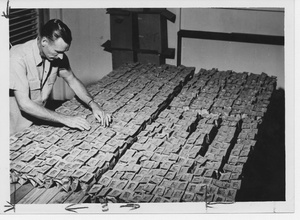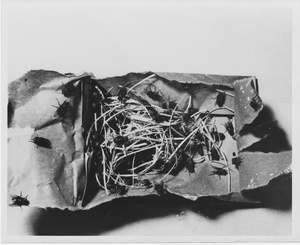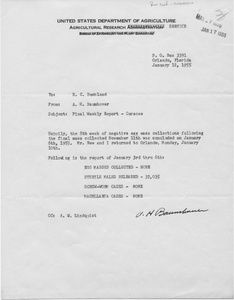1953-1955
Curaçao Infestation
In January 1953, a chance communication from B.A. Bitter, veterinary officer of Curaçao, provided the ideal location to test eradication methods on a broader basis. Bitter requested advice from USDA on how to get rid of a screwworm infestation of livestock, preferably by biological means. The letter ended up on Knipling's desk just as the screwworm research staff began looking for test sites that might prove more conclusive than Sanibel.
Curaçao as a Test Site
Knipling saw the potential of Curaçao as a test site, but he made it clear to Bitter that the use of sterile flies was in the experimental stage.
Curaçao: An Ideal Test Site
Alfred H. Baumhover, who participated in the Florida experiments, went to Curaçao to survey the screwworm infestation and the island's terrain. Curaçao turned out to be an ideal testing area for the Sterile Insect Technique (SIT) because of its ample domestic livestock population, the size of the island, and its distance from the mainland. Curaçao was large enough to support field tests but small enough for scientists to carry out the needed research. It was also 40 miles away from Venezuela, which the scientists believed to be far enough to prevent fly migration.
Work Begins in Curaçao
The USDA team led by Baumhover began working in Curaçao in early 1954. The governor of the Dutch Antilles (of which Curaçao was part) authorized Bitter to work full time with the USDA team.
Orlando, Florida, and Curaçao Scientists Coordinate Efforts
The scientists in Curaçao had to rely largely on the fly-rearing facility in Orlando to supply the sterile flies. Bushland, who maintained his post at the Agricultural Research Station in Kerrville, Texas, coordinated the complex effort between Orlando and the island.
Flies Released in Curaçao
The Florida staff began round-the-clock production of sterile flies to be shipped to Curaçao. A.J. Graham led the Orlando crew. Chronic shortages of personnel aggravated numerous fly-rearing and shipping problems.
Screwworms Eradicated in Curaçao
Preliminary sterile fly releases began in Curaçao in March 1954. In August, eradication began in earnest. Within 2 months no fertile eggs could be found on the island. Sterile flies were released by the tens of thousands into January 1955, when the project was terminated. Screwworms had been eradicated from Curaçao.
 An official website of the United States government.
An official website of the United States government.

